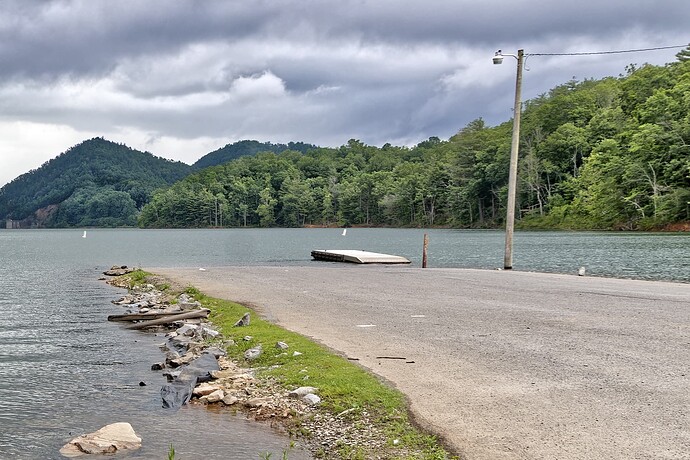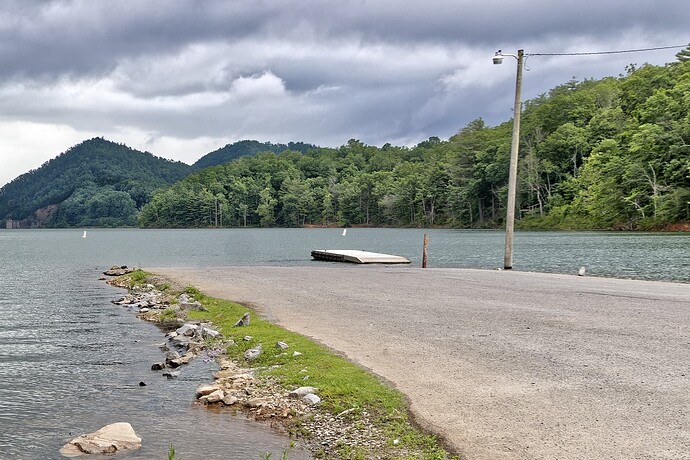Attached is two versions of the same image. It is a crop of a much larger image of a lake in Tennessee with a large boat ramp. There is garbage on the ramp and what looked like a twisted guard rail and a large rubberized tarp of some sort. There were incredibly ugly and had no place on this otherwise pristine lake so I removed them.
Mark
With Garbage:.
Without Garbage
Yesterday I saw a painting where the painter deliberate added a few garbage bags in the view. I thought on this discussion when I saw it. Not meant to start it over again.
George


